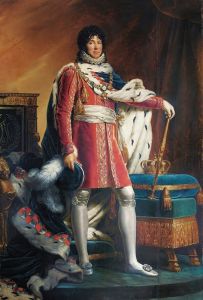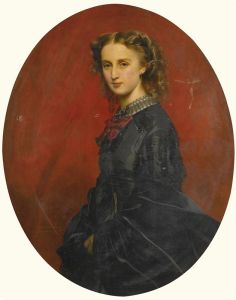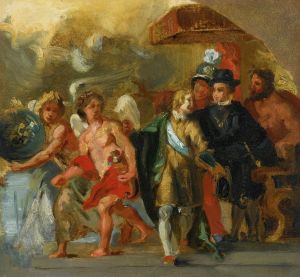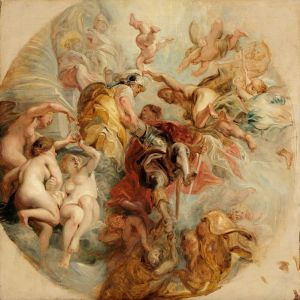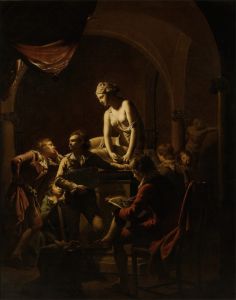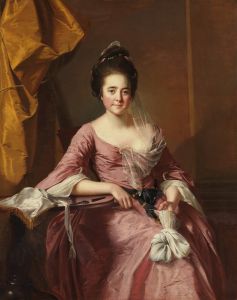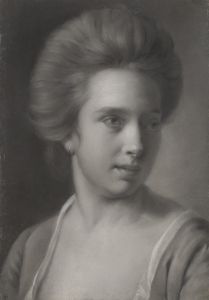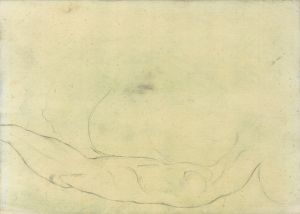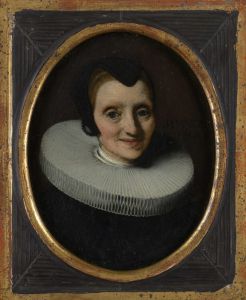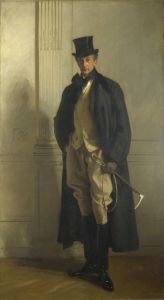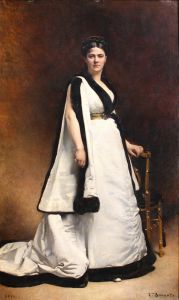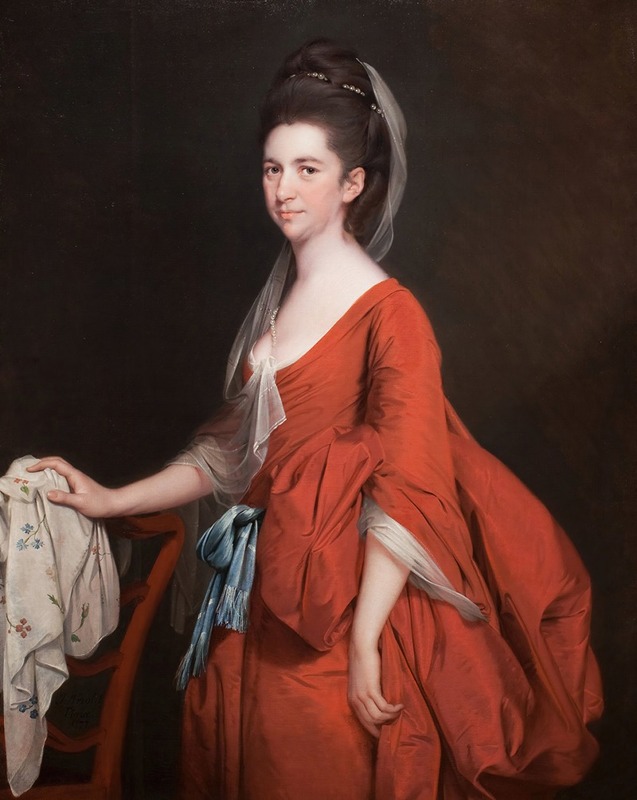
Portrait of Dorothy Beridge, nèe Gladwin
A hand-painted replica of Joseph Wright of Derby’s masterpiece Portrait of Dorothy Beridge, nèe Gladwin, meticulously crafted by professional artists to capture the true essence of the original. Each piece is created with museum-quality canvas and rare mineral pigments, carefully painted by experienced artists with delicate brushstrokes and rich, layered colors to perfectly recreate the texture of the original artwork. Unlike machine-printed reproductions, this hand-painted version brings the painting to life, infused with the artist’s emotions and skill in every stroke. Whether for personal collection or home decoration, it instantly elevates the artistic atmosphere of any space.
Joseph Wright of Derby, an eminent 18th-century English painter, is renowned for his distinctive use of chiaroscuro and his depictions of the Enlightenment's scientific and industrial advancements. Among his diverse body of work is the portrait titled "Portrait of Dorothy Beridge, née Gladwin." This painting exemplifies Wright's skill in portraiture, capturing the essence and character of his subjects with remarkable clarity and sensitivity.
Dorothy Beridge, born Dorothy Gladwin, was a member of the Gladwin family, which had connections in Derbyshire, England. The Gladwins were a well-established family, and Dorothy's marriage to Beridge further cemented her status within the social circles of the time. The portrait of Dorothy Beridge is a testament to Wright's ability to portray the genteel elegance and poise of his sitters, reflecting both their social standing and personal attributes.
In this portrait, Wright employs his signature technique of chiaroscuro, a method that uses strong contrasts between light and dark to create a sense of volume and three-dimensionality. This technique not only highlights the facial features and attire of Dorothy Beridge but also imbues the painting with a sense of depth and realism. The lighting in the portrait is carefully controlled, drawing attention to Dorothy's face and the delicate details of her clothing, which are rendered with exquisite precision.
Wright's portraits are noted for their psychological depth, and "Portrait of Dorothy Beridge, née Gladwin" is no exception. The painting captures a serene and composed expression, suggesting a woman of intelligence and grace. Her attire, likely indicative of her social status, is depicted with meticulous attention to detail, showcasing the textures and patterns of the fabric. This attention to detail is a hallmark of Wright's portraiture, reflecting his commitment to realism and his ability to convey the subtleties of character and status through visual means.
The background of the portrait is typically understated, a common feature in Wright's work, which serves to focus the viewer's attention on the subject. This compositional choice enhances the intimacy of the portrait, allowing the viewer to engage directly with Dorothy Beridge's likeness without distraction. Wright's use of a neutral or dark background further emphasizes the illumination of the subject, a technique that enhances the overall impact of the portrait.
Joseph Wright of Derby's portraits, including that of Dorothy Beridge, are celebrated for their technical excellence and their ability to capture the spirit of the age. His work provides valuable insights into the social and cultural milieu of 18th-century England, offering a glimpse into the lives of individuals who were part of the Enlightenment's broader narrative. The "Portrait of Dorothy Beridge, née Gladwin" remains a significant example of Wright's contribution to the art of portraiture, reflecting both his artistic prowess and his deep understanding of human character.





